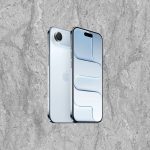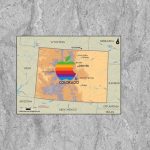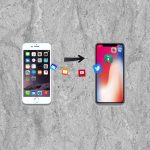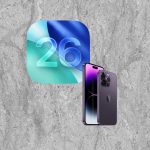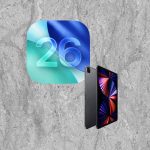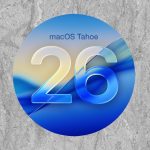Connecting to the internet is how your Mac or iPad connects to the world, it provides data beyond what is stored on your device.

The internet is a massive, worldwide web that ties together countless computers and smart devices, enabling instant communication, limitless data sharing, and access to a universe of digital content, tools, and entertainment. It’s the unseen force that powers everything from browsing websites and checking emails to streaming your favorite shows, managing your finances online, and scrolling through social media. Fueled by an intricate infrastructure of servers, cables, and data hubs, the internet operates like a lightning-fast digital expressway, moving information across the globe in the blink of an eye. Whether you’re searching for tonight’s dinner recipe, firing off a funny GIF, or hopping on a video call, you’re tapping into a global system that puts the world at your fingertips.
TABLE OF CONTENTS
Table of Contents
Where can I access the internet?
You can access the internet almost anywhere these days, depending on the device and connection available. Here are some common places:
- At Home – Using Wi-Fi from a home internet service provider.
- At Work or School – Through secure wired or wireless networks.
- Public Places – Libraries, cafes, airports, hotels, and even some parks often offer free public Wi-Fi.
- On the Go – Smartphones, tablets, and laptops can connect via mobile data (like 4G or 5G) through a cellular provider.
- Hotspots – You can use personal mobile hotspots or tether from a phone to give other devices access.
Wherever there’s a network and a connected device—Wi-Fi, Ethernet, or mobile—you’re online.
What is the difference between Wi-Fi, Ethernet or mobile?
Wi-Fi, Ethernet, and mobile data are three distinct paths to the internet, each with its own strengths and setup:
Wi-Fi is a wireless connection that beams internet access from a nearby router to your device using radio waves. It’s the go-to for homes, offices, and public hotspots because it’s easy and cable-free. However, performance can dip if you’re too far from the router or surrounded by signal-blocking walls.
Ethernet is a hardwired connection, using a physical cable to link your device directly to a router or modem. It delivers faster, more consistent speeds with minimal lag or interference—making it a favorite for online gaming, video conferencing, or transferring hefty files.
Mobile Data taps into the cellular network—like 4G or 5G—to get you online anywhere you have signal. It’s the ultimate travel companion, offering web access without needing a router or Wi-Fi. Just keep in mind: speeds and availability depend on your carrier and coverage, and data usage may count against your monthly plan.
To sum it up:
-
Wi-Fi = cable-free internet at home, work, or public spots
-
Ethernet = stable, high-speed internet via direct cable
-
Mobile = wireless internet from cell towers, perfect for on-the-move access
How do I connect my Apple devices to the internet?
Getting your Apple devices online is a breeze—whether you’re using Wi-Fi, Ethernet, mobile data, or a hotspot. Here’s a quick guide to help you connect with ease:
Wi-Fi (the most common way to connect):
On iPhone or iPad:
-
Open the Settings app
-
Tap Wi-Fi
-
Toggle Wi-Fi ON if it’s off
-
Select a network from the list
-
Enter the password, then tap Join
On a Mac (MacBook, iMac, etc.):
-
Click the Wi-Fi icon in the upper-right menu bar
-
Pick your desired Wi-Fi network
-
Enter the password if asked
And just like that, you’re online.
Ethernet (for Macs with a port or adapter):
-
Plug in the Ethernet cable—either directly or using a USB or Thunderbolt adapter
-
macOS typically connects automatically—no password needed
-
Double-check by going to System Settings > Network
Enjoy a rock-solid connection perfect for speed and stability.
Mobile Data (for iPhone or iPad with cellular):
-
Head to Settings
-
Tap Cellular (or Mobile Data)
-
Flip the switch to turn Cellular Data ON
Now you’re connected through your carrier’s 4G or 5G network—great for staying online wherever you go.
Using Personal Hotspot (share your iPhone’s connection):
On your iPhone:
-
Go to Settings > Personal Hotspot
-
Turn Allow Others to Join ON
On your iPad or Mac:
-
Select your iPhone from the Wi-Fi network list
-
Enter the hotspot password (displayed on your iPhone screen)
Once paired, your Apple devices will auto-connect next time they’re nearby—no extra steps needed.
With these quick methods, your Apple gear will be ready to browse, stream, chat, or work in seconds—whether you’re at home, in the office, or out in the world.
At home I need an internet service provider? What does that mean?
Yes, having internet at home starts with an Internet Service Provider (ISP)—and here’s what that really means:
An ISP is the company that brings the internet into your home. They act as the bridge between your personal devices and the vast world of online content, typically using a modem (to receive the signal) and often a router (to broadcast Wi-Fi around your space). Without an ISP, your home devices have no way to reach the web.
Popular ISPs include big names like Xfinity, AT&T, T-Mobile, Verizon, and CenturyLink, though smaller regional providers also serve many areas. When you subscribe, your provider usually supplies the necessary equipment—either loaned or for purchase—and charges a monthly fee based on the speed and service type you select, such as fiber, cable, or DSL.
So when someone says, “I’ve got Wi-Fi at home,” that wireless signal is just a way of accessing the connection their ISP has set up. It all starts with that internet pipeline coming in.
Now, what about internet in a rental?
Your landlord might include internet access, but that depends on your lease agreement. Here are the usual setups:
— Included in Rent: Some landlords provide internet as part of the rental package, and it’s already set up when you move in.
— Shared Building Wi-Fi: In multi-unit properties, there may be a shared network for all tenants.
— You Set It Up Yourself: In many cases, you’ll need to choose and set up your own ISP plan.
Always double-check your rental terms to know where you stand.
What is the difference between Xfinity, AT&T, T-Mobile, Verizon or CenturyLink Internet? Are there other ISP’s in Boulder?
If you’re in Boulder and shopping for home internet. While Xfinity, AT&T, T-Mobile, Verizon, and CenturyLink all provide internet, they do it differently depending on the technology they use, speeds offered, and how reliable they are in your neighborhood.
🔌 1. Xfinity (Comcast) – Cable Internet
- Technology: Cable (via coaxial lines)
- Speeds: Up to 2,000+ Mbps (gigabit available in many areas)
- Pros: Widely available in Boulder, fast and reliable
- Cons: Prices can increase after the first year, data caps may apply
- Best For: Streaming, gaming, work-from-home, large households
📡 2. AT&T – Fiber & DSL
- Technology: Fiber (best) and DSL (slower legacy option)
- Speeds: Fiber up to 5,000 Mbps; DSL much lower
- Pros: Super-fast fiber speeds in select areas, no data caps on fiber
- Cons: Fiber not available everywhere; DSL is outdated
- Best For: Households with heavy data usage, future-proofing
📶 3. T-Mobile Home Internet – 5G Wireless
- Technology: 5G/4G LTE wireless
- Speeds: Typically 100–300 Mbps (varies by signal strength)
- Pros: No wires, quick setup, no annual contracts
- Cons: Speed depends on 5G signal quality; may slow during network congestion
- Best For: Renters, apartments, flexible/portable internet
📶 4. Verizon Home Internet – 5G Wireless or Fiber (Fios)
- Technology: 5G/4G LTE and limited Fios fiber
- Speeds: 100–1,000+ Mbps
- Pros: Fast wireless speeds in strong coverage areas, price-locked plans
- Cons: Availability varies; best performance needs strong signal
- Best For: People without access to fiber or cable, renters
🔌 5. CenturyLink (Now Quantum Fiber in Some Areas) – Fiber & DSL
- Technology: Fiber (where available) and DSL
- Speeds: Fiber up to 940 Mbps; DSL much slower
- Pros: Fiber has no data caps, simple pricing
- Cons: DSL is slower; limited fiber availability
- Best For: Homes in fiber zones looking for straightforward plans
💡 Other ISPs in the Boulder Area:
- Google Fiber Webpass (in select apartment buildings): Fast, affordable fiber internet—especially in multi-unit buildings.
- Rise Broadband – Fixed wireless internet; good for rural or less-wired parts of Colorado.
- Starry Internet – Wireless internet provider with a focus on apartment buildings (limited but growing).
- Ting Internet – Expanding into some Colorado markets with fiber options.
- HughesNet / Viasat – Satellite internet; generally only used where nothing else is available.
🚀 How to Choose:
- Speed & Usage: Gamers and streamers need high speeds and low latency (fiber or cable). Light users can often get by on 5G or DSL.
- Availability: Not all providers serve every address. Use their websites to check by ZIP code or address.
- Price: Compare introductory rates and regular rates after promo periods.
- Contracts: Some offer contract-free options, others lock you in.
Boulder Mac Repair is an independent service provider and is not compensated by, affiliated with, nor sponsored by any of the internet providers mentioned in this post. We do not endorse, recommend, or guarantee any specific internet service or provider. Our goal is simply to provide helpful information to assist you in making your own informed decisions.
Denver Mac Repair can make sure you’re internet ready?
At Boulder Mac Repair, we do more than just fix Macs—we make sure your Apple devices are fully connected and ready to roll with whatever the internet sends your way. Whether you’re settling into a new place, switching ISPs, or setting up a shiny new router, our crew gets your MacBook, iPhone, iPad, or Apple TV online quickly, securely, and with zero fuss.
Frustrated by slow Wi-Fi, frozen Zoom calls, or gadgets that keep dropping off the network? We dig deep to diagnose the cause—whether it’s a confused router, outdated software, or tangled-up system settings. Need help configuring a new router or setting up a mesh network? We’ve got you covered. We’ll also walk you through your home internet setup and make sure everything is dialed in for speed, reliability, and security—without drowning you in technical mumbo jumbo.
For students, professionals, creatives, and remote workers alike, a solid connection is everything. That’s why we also optimize your Apple devices for cloud syncing, Apple Mail, and even Apple Intelligence features, ensuring they function smoothly whether you’re on Wi-Fi or cellular. We’re the friendly link between your tech and your service provider—turning frustration into fast, flawless performance.
So whether you’re streaming, FaceTiming, updating apps, downloading projects, or just casually scrolling, Boulder Mac Repair makes sure your Mac—and everything else Apple—is always internet-ready, stable, and stress-free.



- What is the iPhone Air?
- What does it mean when an external hard drive format is for Mac or for Windows?
- Designed by Apple in California. Loved in Colorado.
- How do I migrate my iTunes and App Store purchases to another Apple Account.
- Boulder Mac Repair is currently purchasing Apple Devices for resale.
- What’s new in iOS 26?
- What’s new in iPadOS 26?
- What’s new in macOS 26 Tahoe?


